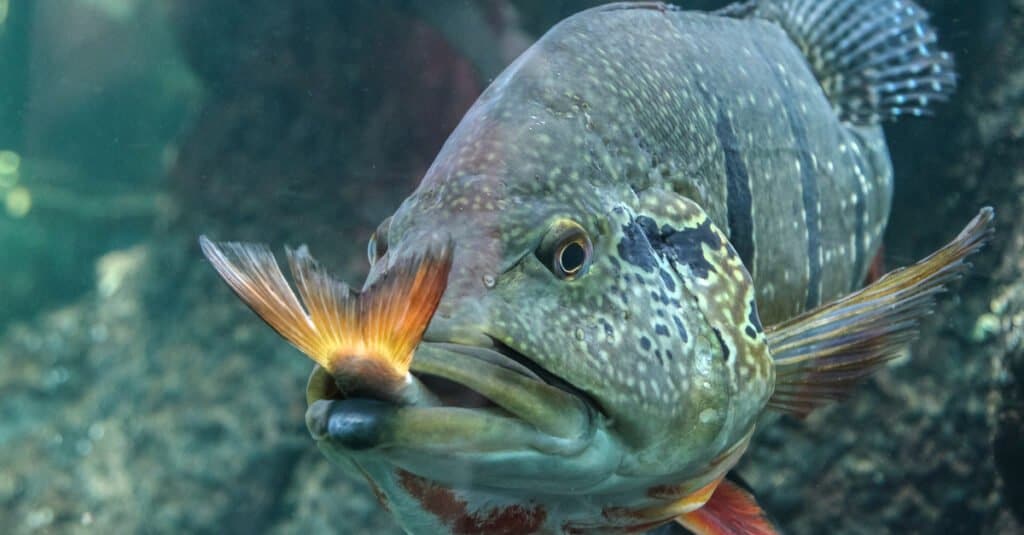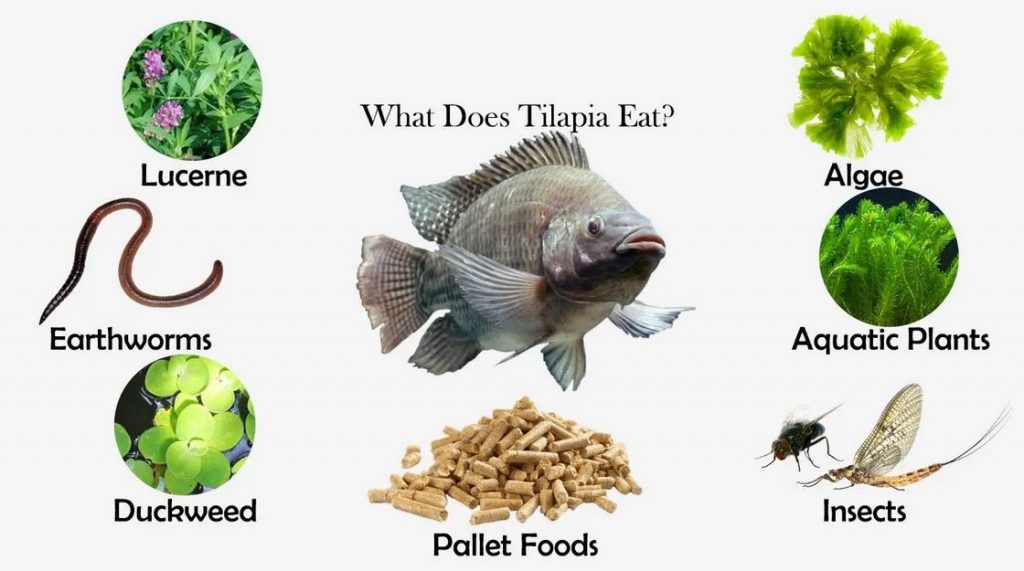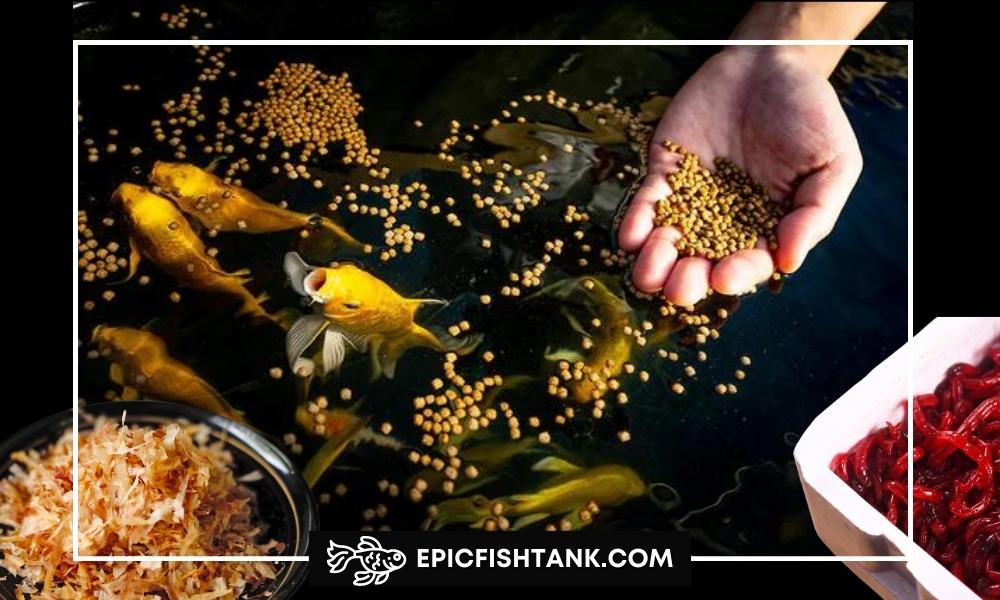Hey there, ocean lovers! If you’ve ever wondered what do fish eat in the sea, you’re about to dive deep into the fascinating world of marine life. Fish are some of the most diverse creatures on the planet, and their diets vary just as much as the environments they live in. From tiny plankton to big chunks of other fish, their eating habits are as wild as the ocean itself. So, buckle up, because we’re about to uncover the secrets behind what keeps our finned friends thriving in the deep blue!
Now, you might think fish just munch on random stuff floating around, but it’s way more complex than that. Their diets depend on factors like species, size, habitat, and even the time of year. Some fish are picky eaters, while others will eat just about anything that fits in their mouths. Ever seen a shark go after a juicy seal or a clownfish nibbling on algae? Yeah, it’s all part of the underwater food chain, and it’s pretty darn interesting.
So, why does this matter? Understanding what fish eat in the sea isn’t just for marine biologists or aquarium enthusiasts. It’s crucial for conservation efforts, sustainable fishing practices, and even for us as humans who rely on seafood. Ready to get schooled on the ins and outs of fish diets? Let’s dive right in!
Read also:Taylor Rooks Measurements Unveiling The Iconic Models Stats And Facts
Table of Contents
- Introduction: What Do Fish Eat in the Sea?
- Types of Fish Diets: Herbivores, Carnivores, and Omnivores
- Common Food Sources for Fish in the Sea
- How Fish Eat: Feeding Methods and Techniques
- Diet by Species: What Different Fish Eat
- Environmental Impact on Fish Diets
- Sustainability and Fish Diets
- Interesting Facts About Fish Eating Habits
- Myths and Misconceptions About What Fish Eat
- Conclusion: Why Knowing What Fish Eat Matters
Types of Fish Diets: Herbivores, Carnivores, and Omnivores
Alright, let’s talk about the different types of diets in the sea. Fish, like us humans, can be divided into three main categories when it comes to what they eat: herbivores, carnivores, and omnivores. Each type has its own unique way of getting nutrients, and it all depends on their biology and environment.
Herbivorous Fish: The Vegans of the Sea
Herbivorous fish are the plant-loving bunch. They mostly feed on algae, seaweed, and other plant matter. Think of fish like surgeonfish and parrotfish. These guys spend their days grazing on coral reefs, keeping the algae population in check. Without them, the reefs could get overgrown and lose their vibrant colors.
Carnivorous Fish: The Meat Lovers
On the other end of the spectrum, we have the carnivores. These fish are all about protein and hunt down smaller fish, crustaceans, and squid. Predatory fish like sharks, tuna, and barracudas are the top dogs in the ocean food chain. They’re built for speed and stealth, making them lethal hunters.
Omnivorous Fish: The Best of Both Worlds
And then there are the omnivores, who don’t mind mixing it up. They’ll eat both plants and animals, depending on what’s available. Fish like clownfish and tilapia fall into this category. This flexibility helps them survive in different environments, whether it’s a coral reef or a freshwater lake.
Common Food Sources for Fish in the Sea
So, what exactly do fish eat in the sea? Let’s break it down by the most common food sources. These sources vary depending on the depth, temperature, and location of the water.
- Plankton: Tiny organisms that drift with the currents. These are a staple for many small fish and even some large ones like baleen whales.
- Crustaceans: Think shrimp, crabs, and lobsters. These are a favorite snack for a lot of fish, especially those with strong jaws.
- Other Fish: Yep, some fish are cannibals. They’ll eat smaller fish or even their own kind if they’re hungry enough.
- Algae and Seaweed: As we mentioned earlier, herbivorous fish rely heavily on these for their daily meals.
How Fish Eat: Feeding Methods and Techniques
Now that we know what fish eat, let’s talk about how they eat. Fish have developed some pretty cool ways to catch and consume their food. Here are a few of the most common methods:
Read also:Louis Partridge Ethnicity Unpacking The Roots Of This Rising Star
Suction Feeding
Many fish use suction to draw in their prey. They open their mouths wide and create a vacuum, pulling the food right into their bellies. This is a popular technique among fish that feed on plankton or small organisms.
Hunting and Ambushing
For the carnivores, hunting is serious business. Some fish, like sharks, use their incredible speed to chase down prey. Others, like stonefish, are masters of disguise, waiting patiently for unsuspecting victims to swim by.
Grazing
Herbivorous fish spend their days grazing on algae and seaweed. They use specialized teeth to scrape food off rocks and coral. It’s a slow but steady way to get their fill.
Diet by Species: What Different Fish Eat
Let’s take a closer look at the diets of some popular fish species. Each one has its own unique eating habits that make them stand out in the ocean.
Clownfish
Clownfish are omnivores, meaning they eat both plants and animals. They love munching on algae, plankton, and small crustaceans. They also have a special relationship with sea anemones, which provide them with protection and sometimes even food scraps.
Sharks
Sharks are the ultimate predators of the sea. Depending on the species, they’ll eat anything from fish and seals to sea turtles and even other sharks. Their powerful jaws and sharp teeth make them fearsome hunters.
Tuna
Tuna are fast-swimming carnivores that feed on smaller fish, squid, and crustaceans. They’re constantly on the move, covering vast distances in search of their next meal.
Environmental Impact on Fish Diets
The environment plays a huge role in what fish eat. Changes in water temperature, pollution, and overfishing can all affect the availability of food. For example, coral bleaching can reduce the amount of algae available for herbivorous fish, forcing them to find new sources of nutrition.
Climate Change
Climate change is one of the biggest threats to marine ecosystems. Rising ocean temperatures and acidification can disrupt the food chain, making it harder for fish to find food. Some species may adapt by changing their diets, while others may struggle to survive.
Pollution
Pollution is another big issue. Plastic waste and chemicals can harm fish and their food sources. Microplastics, for instance, are often mistaken for food by small fish, leading to health problems and even death.
Sustainability and Fish Diets
Understanding what fish eat is crucial for sustainable fishing practices. By studying their diets, scientists can determine which species are most at risk and how to protect them. This knowledge helps ensure that fish populations remain healthy and that future generations can enjoy the bounty of the sea.
Sustainable Fishing
Sustainable fishing involves catching fish in a way that doesn’t harm the environment or deplete populations. This means using methods that target specific species and avoid bycatch, which is the accidental capture of non-targeted species.
Marine Protected Areas
Marine protected areas are regions where fishing is restricted or banned altogether. These areas allow fish populations to recover and thrive, ensuring a balanced ecosystem.
Interesting Facts About Fish Eating Habits
Here are some fun facts about what fish eat in the sea:
- Some fish, like the cleaner wrasse, eat parasites off other fish. This helps keep the ocean clean and healthy.
- Seahorses use their long snouts to suck up tiny shrimp and plankton.
- Pufferfish have beak-like teeth that they use to crush the shells of crustaceans.
Myths and Misconceptions About What Fish Eat
There are plenty of myths floating around about fish diets. Here are a few of the most common ones:
Myth: All Fish Eat Meat
Not true! As we’ve seen, many fish are herbivores or omnivores, and they rely on plant matter for their nutrition.
Myth: Fish Don’t Need to Eat
Some people believe that fish can survive without eating, but that’s a big no-no. Fish need food to grow, reproduce, and stay healthy, just like any other living creature.
Conclusion: Why Knowing What Fish Eat Matters
So, there you have it, folks! What fish eat in the sea is more than just a curious question—it’s a vital part of understanding our oceans and the creatures that live in them. Whether they’re munching on algae, hunting for prey, or grazing on coral reefs, fish have some pretty amazing eating habits.
By learning about their diets, we can better protect them and ensure that the ocean remains a vibrant and thriving ecosystem. So, the next time you’re at the beach or visiting an aquarium, take a moment to appreciate the incredible diversity of marine life and the food that keeps them going.
Now, it’s your turn! Do you have any questions about fish diets? Or maybe you’ve seen something cool in the ocean that you’d like to share? Drop a comment below and let’s keep the conversation going. And don’t forget to share this article with your fellow ocean enthusiasts!


